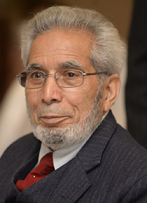Recession Doesn’t Last Long, Best of Opportunities Are Found in Difficult Environment
By Saghir A. Aslam
Rawalpindi, Pakistan

(The following information is provided solely to educate the Muslim community about investing and financial planning. It is hoped that the Ummah will benefit from this effort through greater financial empowerment, thus enabling the community to live in financial security with dignity and fulfil their religious and moral obligations towards charitable activities.)
De-risking the portfolio
One of the first steps that one needs to take is to ensure that the portfolio is clear of any toxic assets. Assets that create MtM cause undue volatility in the existing portfolio, which in slow and recessionary periods, continues to erode the portfolio value at an undesired pace.
An essential step is to deleverage the existing portfolio and clear the books of any unwanted risk.
Avoid obsession with revaluation
Due to the prevailing uncertainty across the globe and specifically within the country, there would be large swings with prices moving in both directions.
Revaluing the portfolio frequently and tracking its value results in unwarranted stress and would cloud the decision-making process. This is not to downplay the value of investment timing.
Timing the investment
A thoughtful review of the asset and asset classes needs to be undertaken to identify the short-term and long-term economic, political and financial situation. This would help build up a path of how prices would move and help in averaging out the investment outlay.
It is essential to clarify the long-term and short-term financial conditions as well as look in your mind at what you believe will be the next feds moving to raise interest rates as they have seen recently evaluated as I have shared with you.
Portfolio bifurcation
A deep thought needs to be undertaken by the asset holder to evaluate his needs for funds. In these testing times, I would look into bifurcating the portfolio into the following key portions:
Emergency funds: This is the kitty that helps cushion the pressure on the standard of living due to any untoward incident, causing a drop in income levels or due to any unwarranted increase in spending caused by price hikes.
These should be invested in highly liquid assets that offer consistent returns, simulating the fixed-income portfolio.
The aim should be to have three to six months of living expenses held in this liquid asset portfolio to ensure one has a solid emergency fund in existence. Worth noting is that “Cash is King” during recessionary periods and one needs to remain liquid.
What will be a little bit safer to look towards the health care stocks, utility stocks and consumer staples? Usually, these are more stable most of the time even in a condition like this group of stocks or safer and you will find some of them could become ever big winners but on the other side, you have much less chance of eroding the value like some of the higher stocks. In the sectors that I have listed above you can invest and sleep well because you know they will not go down in value considerably all of a sudden; these kinds of staples sectors are best buys especially in times like we are in at the present.
To be continued.
This article has been written in collaboration with Walt Hommerding senior vice president investment of Wells Fargo .
(Saghir A. Aslam only explains strategies and formulas that he has been using. He is merely providing information, and NO ADVICE is given. Mr Aslam does not endorse or recommend any broker, brokerage firm, or any investment at all, nor does he suggest that anyone will earn a profit when or if they purchase stocks, bonds or any other investments. All stocks or investment vehicles mentioned are for illustrative purposes only. Mr Aslam is not an attorney, accountant, real estate broker, stockbroker, investment advisor, or certified financial planner. Mr Aslam does not have anything for sale.)

